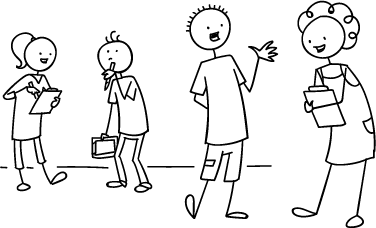Great ideas for using readers during your lesson
Reading a story with your students is a great way to develop all areas of language in a fun and engaging way. Here are some quick tips to make the most of this excellent resource.
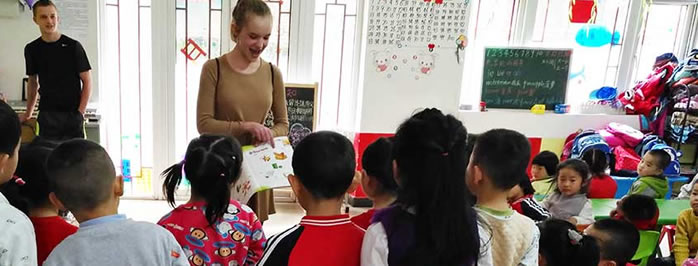
1. Create the right setting
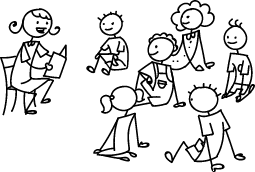 Let everyone know that it is time to start this section of the lesson by announcing “Story time!” to the class. Get everyone close in – have little ones sit on the floor around you on cushions, older kids can bring their chairs to the front. Having everyone close together with you allows for easy communication during the activity.
Let everyone know that it is time to start this section of the lesson by announcing “Story time!” to the class. Get everyone close in – have little ones sit on the floor around you on cushions, older kids can bring their chairs to the front. Having everyone close together with you allows for easy communication during the activity.
2. Choose a reader that is linked to the theme of the lesson
If you can, choose a reader that has a topic linked to the theme of the lesson. By planning beforehand, you can make sure that vocabulary in the reader is introduced earlier in the lesson, so that this vocabulary is reinforced during story time. We have over 60 classroom readers that link perfectly with our lesson plans.
3. Use the front cover as an introduction
Show the front cover of the reader to your students and elicit as much vocabulary as possible using the picture, title and prediction.
 For example, for our reader “Jamie’s Magic School Bag” (lesson theme: classroom stationery), show the cover picture and elicit what the picture shows (a boy / student with a school bag on his back). Encourage students to predict where he is going (to school) and ask what everyone thinks is in his bag. This will allow students to reuse vocabulary from the lesson and also create a sense of anticipation as students will want to find out if their predictions are true (which creates a motivation for focusing on the story).
For example, for our reader “Jamie’s Magic School Bag” (lesson theme: classroom stationery), show the cover picture and elicit what the picture shows (a boy / student with a school bag on his back). Encourage students to predict where he is going (to school) and ask what everyone thinks is in his bag. This will allow students to reuse vocabulary from the lesson and also create a sense of anticipation as students will want to find out if their predictions are true (which creates a motivation for focusing on the story).
If students are able, ask them to read the title (if not, tell the students the title) and then ask if anyone thinks there are other things in his bag, seeing as it is magic. This should create a lot of fun predictions.
By now, students will have a good idea of what is coming and much of the key vocab has been elicited.
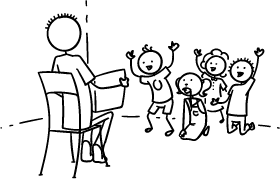 4. Use the pictures in the reader to elicit vocabulary
4. Use the pictures in the reader to elicit vocabulary
Before reading each page, elicit as much vocabulary from the pictures as you can. Point to the pictures and ask what they show. This allows you to elicit or teach much of the vocabulary used in the content of the story.
5. Ask for predictions
Always have your students make predictions throughout the story, so there is continuous interest in what is happening. Ask what students think will happen based on the pictures. Ask what they think will happen next in the story. Ask why they think certain things are happening. Keep a conversation going by getting your students to make guesses.
6. Elicit additional information
Ask as many questions as you can using the pictures, and try and use different question types (e.g. wh questions, yes/no questions). Here are some ideas for questions:
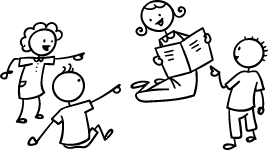 Ask about the colors and weather in the pictures
Ask about the colors and weather in the pictures- Ask what the characters in the pictures are doing
- Ask students to name items in the pictures beginning with letters of the alphabet (“Can you see anything beginning with B?”)
- Ask students personal questions based on the story (“Ben likes chocolate ice cream – How about you Miki? What flavor ice cream do you like?”)
- Ask students to point things out from the story in their classroom (“Can you point to a calculator in this room?”)
- Ask students if they can do the actions in the story (“Can you roar like a lion”?)
7. Encourage student reading
Depending on your students’ reading ability;
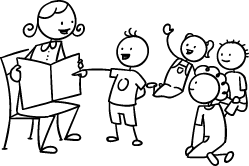 strong readers can “help” the teacher to read, either by reading the words out loud together or by having individual students read a sentence each.
strong readers can “help” the teacher to read, either by reading the words out loud together or by having individual students read a sentence each.- have intermediate level students read target vocab. One way to encourage reading is to ask questions and get students to find answers in the text.
- beginning readers can practice letters, such as pointing to “b” and asking what letter and sound it makes. Then elicit other words with the “b” sound (e.g. bag, big, brown). This is a great way to reinforce any alphabet learning you are doing in the lesson.
8. Use classroom readers with small groups
If your students are able to read, after you have read to the class put them in small groups or pairs to read through the story. Each student takes a turn reading a sentence, paragraph or page.
9. Create a library
Having a library of readers means students can choose readers they have previously read in class as a review reading activity. It can be a simple bookshelf with all your readers. You can also assign readers for homework or extra reading practice. In this case, encourage the parents to read with their kids at home.
10. Have a follow-up activity
Reinforce new learning and check understanding by having a follow-up component to your lesson:
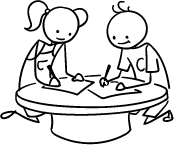 create comprehension question worksheets (all our readers come with a worksheet).
create comprehension question worksheets (all our readers come with a worksheet).- older students can write reviews on a reader that they have read. These reviews can be placed on the classroom walls or even included in your school magazine.
- have students draw a picture that summarizes the story, or a cartoon strip about the story.
- have students write a follow-up story.
- have students write comprehension questions and then have their classmates answer their questions.
- create “fill in the blanks” questions. Write key sentences on the board from the reader with a blank for target vocabulary. Students have to guess the missing words.
- have students create audio versions of the readers – record them onto a phone as they read. They will love hearing themselves back!
- have groups act out the story they have just read.
